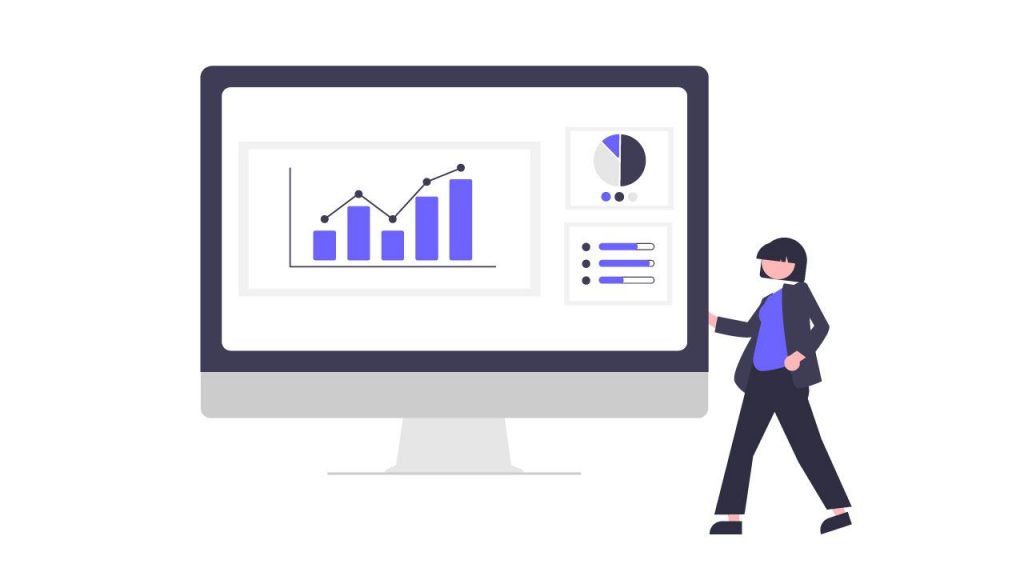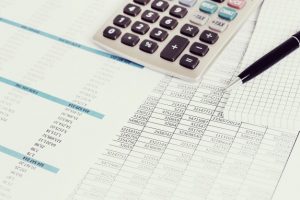Inventory management is crucial for minimizing and controlling inventory-related costs and meeting customer demands. There are many tools and techniques that businesses apply to improve inventory management processes. One of these is calculating and analyzing average inventory, a measure for tracking inventory changes over a specific period.

What is the average inventory?
Investopedia defines average inventory as a calculation that estimates the value (in $) or quantity (in numbers) of a particular inventory unit or the whole inventory during a specified period. Technically, it is the mean value of the opening and closing inventory balances.
Because inventory is represented in financial statements as of the period end date, using that amount in calculations and analysis might not always lead to accurate forecasts and projections. Inventory balance may dramatically fluctuate depending on large orders or seasonal peaks. So, to reduce the effects of those peaks and get a more precise image of your inventory trends, you can use inventory averages.
Why is the average inventory critical?
Businesses do not operate in a vacuum. So, external and internal events affect the business’s operations, performance, relations, etc. So does inventory. Inventory is one asset, the changes of which are strongly correlated with market changes, seasonalities, trends, etc.
For example, you might be expecting to get a large delivery at the end of the reporting period. Or maybe your business has experienced a sudden huge sale. Or, if you are operating in a seasonality-dependent industry, such as swimwear, your sales and inventory levels will fluctuate accordingly. That is why only focusing on a single point inventory balance might not give an accurate image.
The executives and other responsible parties within the company must have a clear understanding of the big picture to make strategic decisions about inventory management. For example, to decide the required sales volumes to meet the demand for a certain period, average inventory will give a broader overview.
Average inventory explained
There are different approaches to averaging inventory. For example, if you need to calculate the average annual inventory, you might add inventory balances at the end of each month and divide them into 12. Taking only the year’s opening and closing inventory balances is also acceptable to calculate the average inventory. However, the more detailed the balances are, the more accurate the inventory figure will be.
Average inventory figures can be used for accounting and planning purposes. Some of them include:
- Calculating inventory turnover ratio: The inventory turnover ratio shows the amount of inventory sold in relation to sales. It is a rate that determines how fast the company replenishes its stock during the period because of sales.
The inventory turnover ratio is the following:
Inventory turnover = Cost of goods sold / Average inventory
- Support in analyzing sales figures: Average inventory is used for comparing sales revenues received to determine the inventory levels to support given or planned sales volumes. These comparisons can be made between different periods.

Average inventory formula and calculation
Average Inventory = (beginning inventory + closing inventory) / number of periods
Now, let’s see the calculations on a practical example.
The quarterly financial statements of the company XYZ show the following inventory balances for the year 2020:
| Quarter | Month | Inventory (kUSD) |
| 1 | March | 517 |
| 2 | June | 643 |
| 3 | September | 680 |
| 4 | December | 1300 |
To calculate the average inventory of the year, the sum of the quarterly balances has to be divided by the number of periods.
Average inventory = (517+643+680+1,300) / 4 = $ 785
Depending on purposes, you might choose to calculate average inventory in terms of the number of units. The logic is the same, except the number of units will be used in the formula instead of monetary values.
Perpetual inventory
The purpose of perpetual inventory practice refers to getting real-time inventory balances. As a result, the inventory balance and changes are always accurate.
To use that model, businesses must integrate technological solutions to automate processes and enable immediate reflection of inventory changes through continuous tracking. It can be performed by a software system, such as eSwap. The system synchronizes inventory-related data from different platforms, including sales, orders, shipments, etc. As a result, balance changes are updated immediately, and inventory figures are always accurate and ready to use.
The main benefits of perpetual inventory include decreases in inventory overstatements and missing inventory understatements. So, the application of the perpetual inventory model improves overall inventory management practices.
Disadvantages of average inventory model
Now, let’s discuss the drawbacks of the average inventory model.
- Effects of seasonal cycles: Seasonality may strongly distort the average inventory figure. Generally, inventory balances are high before seasonal peaks and low after the purchases. For example, think about black Friday. Businesses get ready for a huge shopping wave by getting inventory levels ready, after which the stock gets strongly decreased.
- Sales quota factors: Typically, salespeople have targets that they strive to meet by the end of the month, quarter, or year. So, as the period comes to its end, they work better to meet the sales quotas. As a result, inventory balance by the end of the period can be artificially low compared.
To sum up
Businesses can use average inventory in sales and inventory planning, inventory forecasting, performance analyzing, and other purposes. The critical factor to consider is that it is essential to take more extensive data and update it regularly to reach higher accuracy.







